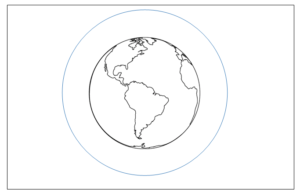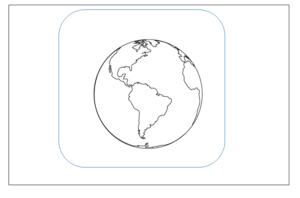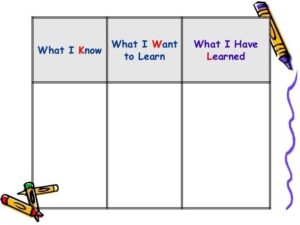EARTH -Engaging Actively in Respecting The Habitat
- Science,Mathematics, Geography, IT
- 9-11
- 3rd-4th
- 240 min

Area of Science:
Grade level:
Age of students:
Total time:
Preparation time:
Teaching time:
Teahing methodology to be used:
Experiment, heuristic discovery, problem solving
Key concepts:
Atmosphere, greenhouse gas emissions, global warming.
Overview
Introduction to the lesson
Children find out about the planet, the Universe, essential conditions for the existence of life, Earth-the only inhabited planet in the Solar System.
Student mission
You are climate detectives and you need to find out about atmosphere, greenhouse gas emissions, global warming and tell your colleagues, friends, parents about it.Your mission is also to think about ways of decreasing the greenhouse effect locally, that will have impact globally. You will work in teams and you will be also involved in interesting experiments.
Because you are detectives, it is important to do accurate, scientific research based on what you have already learned. Thus, you will need to prove your observation, attention, mathematical skills, curiosity, analytical thinking, but also teamwork skills.
21st century technical skills gained through this activity
List of skills e.g. data science and electrical engineering
The skills needed to discover and understand key concepts are:
Creativity and intellectual curiosity
Critical thinking and systemic thinking
Communication skills
Identifying, formulating and solving problems
Self-training
Related job roles
Careers related information
Meteorologist, chemist, biologist, environmental inspector
Differentiation strategies to meet diverse learning needs
At the beginning of the lesson – preparation time – all students will participate in brainstorming, critical and imaginative thinking, so there will be no differentiation.
During the actual teaching time the differentiation will be evident, as students are divided in teams performing different experiments. They also need to find their own role in the team, using negotiation skills, also needed for their future career.
In order to be able to collect as many and valuable ideas as possible during brainstorming and the use of critical and imaginative thinking, students will be guided to learn about key concepts: atmosphere, greenhouse gases, global warming.
Encyclopaedias and specialized sites are recommended:
https://www.eea.europa.eu/signals/signals-2013/articles/every-breath-we-take https://youtu.be/Ke140nuy15E
https://climate.nasa.gov/
Lesson plan
240 min
Time to complete Lesson
To know what the greenhouse / atmosphere effect is;
To Identify the positive and negative aspects of the greenhouse effect;
To discover simple ways to combat the increase in greenhouse gas emissions.
Expected Learning Outcomes
Atmosphere, CO2, global warming
Prior knowledge and vocabulary
Use the Scientific Inquiry model and the Test Your Idea template to help you with your investigative question. See Annex I. and II.
A worksheet based on WHAT I KNOW / WHAT I WANT TO KNOW / WHAT I HAVE LEARNED- Annex 4.2 table is applied. Example items:
If there were no atmosphere – then ……
If the atmosphere had cracks – then …….because ……
Science and Engineering/Math Practices
Math
1.1 Observing some patterns/ explaining some patterns for creating own reasoning.
1.2 Creating some repetitive patterns or reasoning.
3.1 Location of some objects in space and in representations in usual situations.
3.2 Exploring simple characteristics of geometric shapes and figures in usual situations.
4.1 Using some instruments and standard measurement units in everyday situations.
5.2 Organizing data in tables and graphic representations.
Geography
1.1 Identification of some geographic terms in texts or contexts, various learning situations.
4.1 Development of curiosity of knowledge of geographic elements, characteristic of local horizon/country /contemporary world.
4.2 Acquisition interest of understanding the importance for the living society activities.
Practical skills
2.3 Achievement of unique personalized and useful products after some practical, creative and joyful activities.
2.4 Remodelling space and shapes through and various techniques.
Science
1.1 Observing some relations between objects in some processes and phenomena.
1.2 Using some criteria for ordering and classifications of some objects, phenomena and processes.
2.1 Creating a plan for development of an investigation of the environment.
2.2 Applying for the proposed plan for execution of an environment investigation.
2.3 Graphical achievement of some observations made through the investigation, using charts, proper tables and simple formula.
2.4 Formulation of conclusions based on resultsof your own investigation.
2.5 Presentation of conclusions for your own investigation.
3.1 Identifying some easy ways of maintaining health.
3.2 Identifying some ways of protecting the environment.
IT
1. Formation and developing of computer using skills and that of its components.
2.Formation and developing the search selection and information usage skills.
3.Formation and developing communication, sending and processing of the information skills.
4.Forming and developing society integration skills.
Curriculum Alignment
The Universe
Seasons
Why do we need the greenhouse effect on the Earth?
How do the human activities affect the greenhouse effect?
How important is the forest?
Solutions and voluntary.
Engage: Teacher helps students reflect on what they already know and identify any knowledge gaps. It is important to foster an interest in the upcoming concepts so students will be ready to learn. Teachers might task students with asking opening questions or writing down what they already know about the topic. This is also when the concept is introduced to students for the first time.
Materials: sheet with the scheme : WHAT I KNOW / WHAT I WANT TO KNOW / WHAT I HAVE LEARNED
Preparation: 5 Minutes
Facilitation of Learning Experience: 2 Minutes
Transition: Minutes 3
Teacher will: discuss about the atmosphere, the Earth, the Solar System
Draw our planet TERRA on the blackboard (like a circle), twice, and represent the atmosphere by a circle in the first drawing and a square in the second- Annex 3.
Students are asked to choose the correct representation and to motivate the choice (the shape of the planet gives the shape of the gaseous shell because gases do not have their own shape).
Because students already have knowledge of the Earth, and have read about the atmosphere, they use imaginative thinking as well as knowledge transfer to create learning. Thus, if the planet is ovoid and the air is a gas (things that students already know), it is normal for the atmosphere to be in the shape of the planet.
After that the students complete the table: WHAT I KNOW / WHAT I WANT TO KNOW / WHAT I HAVE LEARNED, following the previous discussion.
The WHAT I WANT TO KNOW section is discussed and, starting from students’ questions, the forms included in the annexes are filled in.
Students will: complete the sheet with what they already know and especially with what they want to know about the Earth’s air envelope and how it influences people’s lives
Motivation of the shape of the Earth’s atmospheric shell from the existing drawings on the board
They will complete information regarding: the shape of the planet, air, its composition, the gas that sustains life, the Universe, the place of the Earth in the Solar System, etc.
The teacher will also ask another question that will lead students to discover the role of the atmosphere for life on the planet:
What is the role of the clothes that people wear in winter and what could be the connection between them and the air cover of the Earth?
Explore: During the exploration phase, students actively explore the new concept through concrete learning experiences. They might be asked to go through the scientific method and communicate with their peers to make observations. This phase allows students to learn in a hands-on way.
The experiment consists in creating the environment of two planets: one with atmosphere, another without it. In a plastic bottle, put some soil, then a little water is poured. In both bottles, a thermometer placed as close as possible to the surface of the slightly moistened soil will be inserted. The lid will be screwed to one of the bottles, which will impede the circulation of air outside the bottle (mimicking the Earth’s atmosphere), and no lid will be placed on the other. What the students will notice will be the fact that in the glass with a lid the temperature will increase, while in the one without a lid, it will not.
This experiment will demonstrate the importance of the Earth’s atmospheric layer, the ozone layer that acts similarly to the screw cap of the glass.
Materials: plastic bottles (2 for each team formed), soil, funnel, thermometer, string, adhesive tape, water)
Preparation: 3 Minutes
Facilitation of Learning Experience: 5 Minutes
Transition: 2 Minutes
Teacher will: explains the steps for carrying out the experiment and the students’ tasks- ANNEX 5…
Students will: perform the tasks of the experiment
Explain:This is a teacher-led phase that helps students synthesize new knowledge and ask questions if they need further clarification. For the Explain phase to be effective, teachers should ask students to share what they learned during the Explore phase before introducing technical information in a more direct manner, according to “The 5E Instructional Model: A Learning Cycle Approach for Inquiry-Based Science Teaching.” This is also when teachers utilise video, computer software, or other aides to boost understanding.
Materials: worksheet of the experiment- Annex 5
Preparation: 2 Minutes
Facilitation of Learning Experience:5 Minutes
Transition:3 Minutes
Teacher will: ask children in different teams to carefully observe what happens to the closed bottles (Earth) and the opened bottles(other planets without atmosphere)
Ask students to search online what is the distance between the centre of the planet and its surface (radius of the Earth), as well as the size of the atmosphere – KARMAN Line.
It is explained that, being a gas, air is subject to the laws of physics (expansion and contraction) depending on several factors. For this reason the measurements are approximate and do not define a clear limit of the Earth’s atmosphere. However, based on a repetitive model, it was observed that the size of the atmospheric layer can be approximated, bearing the name of the researcher who dealt with these measurements (Karman – Karman Line).
Also, the radius of the Earth has been calculated by various researchers, the first being Eratosthenes.
The idea is to realize that the atmospheric shell is much thinner than the thickness of the Earth’s radius, but it has a huge significance in maintaining optimal living conditions.
https://www.meteorologiaenred.com/ro/radio-de-la-tierra.html
Students will: observe and write down in the observation sheet
Search and write down the requested information.
Elaborate: The elaboration phase of the 5E Model focuses on giving students space to apply what they’ve learned. This helps them to develop a deeper understanding. Teachers may ask students to create presentations or conduct additional investigations to reinforce new skills. This phase allows students to cement their knowledge before evaluation.
Materials: sheet with the scheme WHAT I KNOW / WHAT I WANT TO KNOW / WHAT I HAVE LEARNED
Preparation:2 Minutes
Facilitation of Learning Experience: 2 Minutes
Transition:1 Minutes
Teacher will: Request the completion of the WHAT I HAVE LEARNED
section
Students will: generate the conclusions of the experiment and complete the section with what they found out.
It is required to approximate the radius of the Earth by hundreds and to find out how many times the size of the atmospheric layer (Karman line) is smaller than the distance between the crust and the centre of the Earth.
By solving these two mathematical tasks, the aim is to anchor the dimensions of the planet in reality, the correct representation of the proportions of the atmosphere compared to the planet, the spherical shape of the Earth, the fact that the gaseous atmospheric shell folds according to the shape of the solid around it, and fixing some numerical landmarks of the two: the planet and the atmosphere.
Evaluate: The 5E Model allows for both formal and informal assessment. During this phase, teachers can observe their students and see whether they have a complete grasp of the core concepts. It is also helpful to note whether students approach problems in a different way based on what they learned. Other helpful elements of the Evaluate phase include self-assessment, peer-assessment, writing assignments, and exams.
Before moving on to the actual assessment, I will bring to the children’s attention a film that illustrates and briefly explains the key terms of the activity: greenhouse effect, greenhouse gases, advantages and disadvantages of increasing greenhouse gases, ways to reduce and combat.
Materials: sheet “WAYS TO REDUCE THE GASES THAT PRODUCE THE GREENHOUSE EFFECT”, coloured pencils, compass (for drawing the Earth, the atmosphere), laptop, videoprojector
Preparation: 2 Minutes
Facilitation of Learning Experience: 5 Minutes
Transition: 3 Minutes
Teacher will: ask students to name easy methods to combat global warming and to draw the Earth and its air cover- Annex 4.2
Students will: complete the form and make the required drawings
Independent learning tasks (ILT): Provide two-three challenges to students to complete before the next lesson.
The challenges addressed to the students following the activity refer to:
– Compiling short projects on global warming
– Searching online for information about Eratosthenes and his experiments;
– Finding other easily applicable ways to reduce greenhouse gas emissions and starting to put them in practice in everyday life.
– Completing a meteorological diagram regarding day / night temperatures, precipitation, wind, etc.
It is specified that the projects can be realized both in digital format and on physical support. It is recommended to use examples from everyday life (met by students), as well as to find / name practical solutions, easily achievable to reduce carbon dioxide emissions in the activities presented. It is also specified that they can work in a team, thus supporting collaborative skills.
Lesson
The students feedback will be given after the experiment by writing down the temperatures and at the end of the lesson by filling the worksheet-Annex 4.2
The basic experiment (which shows the importance of the greenhouse effect of the atmosphere) will be continued by adding a moistened effervescent pill in the bottle with a lid that will increase the CO2 emissions, and the recorded temperature will increase. Students will understand the harmfulness of this fact and will follow the differences between the noted values of the air temperature inside the closed glass.
Student feedback
Alignment of achieved skills and knowledge across other subjects and also teachers may wish to expand on the lesson in various ways.
Online projects: IT
Calculus: Mathematics
Offline projects: Art
Storytelling: Language
Curriculum mapping of outcomes attained
Describe the type(s) of assessment that is suitable for the lesson.
Teacher will assess not only the quality of the projects presented, using a rubric- Annex 6 -, but also the team work and collaboration (teacher assessment) – formal assessment.
The projects made by the students will be evaluated according to an evaluation grid, which the students will know from the beginning.
A visible place will be chosen from the school where the representative works of the activity will be exhibited, the results of the experiment (made both graphically and numerically), the final poster made in collaboration by the students of the class, as well as a free space to be completed. by attracting new colleagues who are interested in joining.
Materials
Materials used for the lesson and online resources
Annexes 1 – 6
https://www.meteorologiaenred.com/ro/radio-de-la-tierra.html
Preparation
Description of what activities should be prepared before the lesson
Before the lesson teacher will prepare the drawings on the boards and the materials needed to perform the experiment. The teacher will also make sure that students will have at their disposal devices with which they can access the Internet to search for various required information.
The necessary materials for the experiment, the laptop, the video projector will be prepared and the links to the necessary video materials will be checked during the activity.
Team Work
Students work in teams both during the experiment but also to prepare the projects using power point presentation and the final common poster of the class about WAYS TO COMBAT GLOBAL WARMING.
Rubrics
See Annex 6
Ek
Annex. I.
Scientific Inquiry

Annex II.
Test Your Idea Template
| Testing Your Idea Organizer | |
| 1. Investigative Question
Your question should relate the manipulated variable to the responding variable. |
Investigative Question: What are the benefits and the negative impact of the greenhouse gases for life on Earth?
|
| 2. Hypothesis
Your hypothesis should be written as an “IF, THEN, BECAUSE” statement. |
Atmospheric gases have the role of ensuring that the planet retains the necessary heat, but increasing their level leads to an increase in temperature – global warming.
|
| 3. Variables
● Manipulated Variable (What you will change) ● Responding Variable (What you will measure) ● Controlled Variables (What will remain constant throughout the test) |
One of the bottles is open.
Adding the effervescent pill increases the level of CO2
Temperature
In order to validate the experiment, one of the bottles will always be closed. |
| 4. Materials
Create a list of all materials you need.
|
plastic bottles, soil, thermometer, water, string, adhesive tape, effervescent pills, funnel, laptop, video projector, phones / tablets, files for recording the data obtained after performing the experiment, colored pencils. |
| 5. Procedure
Should include… ● Manipulated Variable ● Responding Variable ● Controlled Variables ● Logical, Repeatable Steps ● Recording of Specific Data ● Repeated Trials |
X X
x |
| 6. Data
● Design a table for organising data you will be collecting during your test. ● Use your procedure to collect and record data. ● Display your data using appropriate graphs and/or charts.
|
The collected data will be compared and centralized in tables.
They will also be organized as a graphic, because the visual impact is stronger and easier to understand. |
| 7. Conclusion
● State your conclusion relating the manipulated variable to the responding variable. ● Use data to justify your conclusion. ● State whether your hypothesis can be accepted or rejected based on observed data.
|
The conclusions will be found in the projects made and presented by the students, as well as in the presentation corner of the project.
They will be grouped in the I HAVE LEARNED section of the completed scheme throughout the activity.
The hypothesis was confirmed by the measurements during the experiment. |
| 8. Analysis
● Discuss potential sources of error and the potential influence on your results.
● Provide ideas on how and why the experimental design might be improved.
● Describe surprising data.
● List ideas for revising your test idea or new related ideas to test.
|
If any team will record only small temperature differences between the two bottles, an attempt will be made to detect the error. (the lid not screwed/ cracks of the glass…)
|
| 9. Present your findings to your class. |
|
ANNEX 3
- Draw the Earth and its atmosphere as you imagine them!


Choose the image in which you consider that the Earth’s air cover is rendered properly! Motivate the answer!
ANNEX 4

2)
WAYS TO COMBAT GLOBAL WARMING
–
–
–
–
–
–
–
–
ANNEX 5
ATMOSPHERE
What do you need?
• 2empty ½ liter bottles
• 2thermometers
• thread
• soil
• water
• spoon
• foonel
• duct tape
Together with your colleague make a planet Earth with an atmosphere and a planet without atmosphere. Make both planets identical. For each planet:
1 Place the funnel in the mouth of the bottle
2 Pour soil into the funnel until it reaches a few inches thick at the bottom of the bottle.
3 Moisten the soil by adding 2 or 3 tablespoons of water
4 Now attach the thread to the thermometer using duct tape.
Place the thermometer in the glass as shown in the drawing.
5 Glue the other end of the thread to the outside of the bottle, making sure the thermometer is suspended just above the ground.
It can continue with the introduction of a larger amount of water over the glass floor, over which an effervescence pill(CO 2 release) is thrown and observation of temperature oscillation.

ANNEX 6
| Scale of Independent Work | ||||||||
| Zero
Independence |
A lot of Help
with Some Independence |
Semi
Independent |
Fully
Independent |
|||||
| Teacher gives students a full method with
clear instructions for how to develop the experiment |
Teacher gives students an
outline for the procedure but allows options* at different steps. |
Teacher
specifies the example. Students research the method to develop the experiment. |
Students choose real time
example and try to solve all problems during the experiment. |
|||||
| Observation and Assessment of Competencies | ||||||||
| Follow written and oral
procedures |
Students follow written and oral instructions | Students follow written and oral instructions,
making individual choices |
Students follow a method they have researched | Students follow a method they have researched | ||||
| Safely uses a
computer and materials |
Students follow instructions on how to safely
use the computer. |
Students follow instructions on the safe use the computer. | Students
minimise risks with minimal prompting. |
Students carry out a full risk
assessment and minimise risks. |
||||
| Makes records and results
observations |
Students record results data in specified ways. | Students record results data in specified ways. | Students record precise and
accurate data, methodically using |
Students choose the most
effective way of recording precise and accurate data |
||||
PowerPoint Rubric
Task: ________________________ Name:_________________________
| 5
|
4 | 3 | 2 | 1 | |
| Content | Content is clear, accurate,
presented in a logical order and shows a thorough understanding of the topic. |
Most content is clear, accurate, presented in a logical order and shows a good understanding of the topic. | Some content is clear, accurate and/ or presented in a logical order and shows some understanding of the topic. | Content is not clear, accurate and/or presented in a logical order but shows some understanding of the topic. | Content lacks purpose and does not show an understanding of the topic. |
| Presentation of text | Text is well presented with an appropriate amount of text on each slide. | Most text is well presented with an appropriate amount of text on each slide most of the time. | Some text is well presented with an appropriate text on slides some of the time. | Very little text is well presented with too much or too little text on most slides. | Text is not well presented with too much or too little text on each slide. |
| Multimedia and design | Images support
the text and are well presented, with good layout and transitions. |
Most images
support the text and are well presented with good layout and transitions. |
Some images
support the text and/or are well presented with good layout and transitions. |
Very few
images support the text and/ or are well presented with good layout and transitions. |
Images do not support the text and/or are not well presented. |
| Language | Spelling and grammar are accurate with no errors. | Most spelling and grammar are accurate with few or no errors. | Some spelling and/or grammar errors. | High volume of spelling and grammarerrors. | Very high volume of spelling and grammar errors. |
| Work requirement | All requirements were achieved or exceeded. | Most requirements were achieved. | Some requirements were achieved. | Few requirements were achieved. | Very few requirements were achieved. |
Comments:_____________________________________________________
_________________________________________________________
_________________________________________________________
_________________________________________________________

